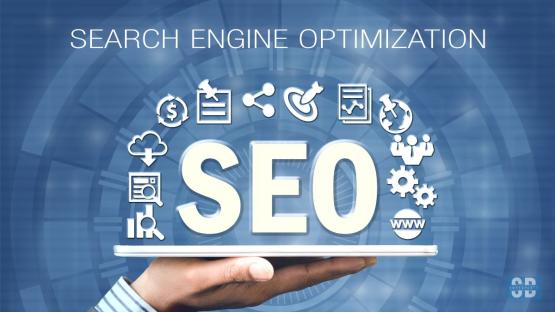When you’re searching for medical advice online, and two websites appear in your results. One is written by an anonymous blogger with no credentials, while the other is authored by a licensed physician from a renowned medical institution. Which one would you trust with your health? This instinctive choice you make reflects exactly what Google’s E-E-A-T framework is designed to measure and reward.
In the ever-evolving landscape of search engine optimization, one concept has emerged as the cornerstone of sustainable, long-term SEO success: E-E-A-T. This isn’t just another technical acronym to memorize – it’s the fundamental principle that separates websites that earn lasting trust and authority from those that struggle to gain traction in search results.
Understanding E-E-A-T: The Foundation of Modern SEO
E-E-A-T stands for Experience, Expertise, Authoritativeness, and Trustworthiness. This framework represents Google’s approach to evaluating content quality and determining which websites deserve to rank highly in search results. Originally introduced as E-A-T (without Experience) in Google’s Search Quality Rater Guidelines, the framework evolved to include Experience in late 2022, reflecting the growing importance of first-hand knowledge in content creation.
The concept emerged from Google’s need to combat misinformation and low-quality content that was flooding search results. As the internet grew, so did the challenge of distinguishing between reliable, helpful content and content created solely for search engine manipulation. E-E-A-T became Google’s solution to this problem, providing a systematic way to evaluate content quality based on the credibility and trustworthiness of both the content creators and the websites hosting the content.
The Evolution of E-E-A-T in Search Quality
Google’s search quality raters use E-E-A-T as a primary evaluation criterion when assessing websites. These human evaluators don’t directly influence individual search rankings, but their assessments help Google refine its algorithms to better identify high-quality content automatically. This means that understanding and implementing E-E-A-T principles isn’t just about following guidelines – it’s about creating content that both humans and search algorithms recognize as valuable and trustworthy.
The framework has become particularly crucial for websites dealing with “ Your Money or Your Life” (YMYL) topics – content that could significantly impact a person’s health, financial security, safety, or well-being. However, E-E-A-T principles apply to all types of content, as Google increasingly prioritizes quality and trustworthiness across all search verticals.
Breaking Down the Four Pillars of E-E-A-T
Experience: The Power of First-Hand Knowledge
Experience represents the content creator’s first-hand or life experience with the topic they’re writing about. This is the newest addition to the framework and reflects Google’s recognition that lived experience often provides unique value that formal credentials alone cannot capture.
When Google evaluates experience, it looks for evidence that the content creator has actually used a product, visited a location, participated in an event, or lived through the situation they’re describing. This might manifest as:
Personal anecdotes and specific details that only someone with direct experience would know. For example, a restaurant review that mentions the exact texture of a signature dish or the specific layout of the dining room demonstrates first-hand experience.
Practical insights and tips that come from real-world application. A fitness article that includes personal workout modifications based on common challenges shows experiential knowledge.
Authentic storytelling that includes both successes and failures. Content that acknowledges limitations and shares lessons learned often demonstrates genuine experience.
Visual evidence such as original photos, videos, or documentation that supports the claimed experience. Screenshots, before-and-after images, or time-stamped content can all serve as experience indicators.
The beauty of the experience factor is that it democratizes content creation. You don’t need advanced degrees or professional credentials to demonstrate experience – you just need authentic, first-hand knowledge of your topic.
Expertise: Demonstrating Knowledge and Skill
Expertise refers to the knowledge, skill, or mastery that a content creator has in a particular subject area. Unlike experience, which is based on personal involvement, expertise is about understanding the broader context, principles, and nuances of a topic.
Google evaluates expertise through several lenses:
Formal qualifications and credentials serve as traditional markers of expertise. Educational degrees, professional certifications, licenses, and specialized training all contribute to perceived expertise. However, expertise isn’t limited to formal credentials.
Demonstrated knowledge through content quality often provides stronger evidence of expertise than credentials alone. Content that shows deep understanding of complex topics, uses appropriate terminology correctly, and demonstrates awareness of industry standards and best practices indicates genuine expertise.
Recognition by peers and industry professionals can validate expertise. This might include citations by other experts, speaking engagements at professional conferences, contributions to industry publications, or membership in professional organizations.
Consistent track record of producing accurate, helpful content over time builds credibility and demonstrates sustained expertise. A blogger who has been writing about personal finance for years and whose advice has proven sound over time shows expertise through results.
Staying current with developments in the field shows ongoing commitment to expertise. Content creators who regularly update their knowledge and incorporate new information demonstrate active expertise rather than outdated knowledge.
It’s important to note that expertise requirements vary significantly by topic. A recipe blog might demonstrate expertise through successful cooking results and positive reader feedback, while a medical website requires formal medical training and professional credentials.
Authoritativeness: Building Recognition and Influence
Authoritativeness is about being recognized as a go-to source for information on a particular topic. It’s the reputation that a website or content creator has built within their industry or subject area. While closely related to expertise, authoritativeness is more about external recognition and the perception others have of your knowledge and reliability.
Industry recognition forms the foundation of authoritativeness. This can include awards, professional accolades, media mentions, speaking invitations, and inclusion in expert roundups or industry publications.
Citation and linking patterns provide strong signals of authoritativeness. When other reputable websites and experts link to your content or cite your work, it indicates that the broader community recognizes your authority on the topic.
Media coverage and press mentions can establish authoritativeness, especially when experts or journalists reference your work or seek your opinion on industry developments.
Professional positions and roles contribute to authoritativeness. Holding leadership positions in professional organizations, serving on industry boards, or working in senior roles at respected companies all signal authority.
Publishing and content distribution through authoritative channels builds recognition. Having work published in respected industry publications, appearing on established podcasts, or speaking at major conferences all contribute to authoritativeness.
Social proof and community engagement can demonstrate authoritativeness in digital spaces. Large, engaged social media followings, active professional networks, and positive community feedback all contribute to perceived authority.
Building authoritativeness takes time and consistent effort. It requires not just creating good content, but also engaging with the broader community in your field and building relationships with other experts and influencers.
Trustworthiness: The Foundation of All E-E-A-T
Trustworthiness is arguably the most important component of E-E-A-T, as it encompasses the overall reliability, honesty, and safety of a website and its content. Google considers trustworthiness the central element that ties the other three components together.
Accuracy and factual correctness form the baseline of trustworthiness. Content must be factually accurate, properly researched, and free from misleading information. This includes citing credible sources, acknowledging limitations, and correcting errors when they’re discovered.
Transparency about the website and content creators builds trust. This includes clear author bios, contact information, company details, and information about the organization behind the website. Visitors should easily understand who is responsible for the content and how to reach them.
Clear policies and practices demonstrate trustworthiness. Privacy policies, terms of service, editorial guidelines, and correction policies all show that a website operates with transparency and accountability.
Security and technical reliability contribute to trustworthiness. Secure HTTPS connections, regular updates, functional links, and protection against malware all signal that a website can be trusted with user information and provides a safe browsing experience.
User feedback and reputation management play important roles in trustworthiness. How a website responds to user comments, handles complaints, and manages its online reputation all contribute to overall trustworthiness.
Consistency across platforms helps build trust. When the information, tone, and quality remain consistent across a website, social media presence, and other platforms, it reinforces the reliability of the content and brand.
The Critical Role of YMYL Content in E-E-A-T
Your Money or Your Life (YMYL) content receives the highest scrutiny under E-E-A-T evaluation because of its potential impact on users’ well-being. Google applies much stricter standards to YMYL content because inaccurate or misleading information in these areas can cause real harm to people’s health, financial security, or safety.
Categories of YMYL Content
Health and safety information includes medical advice, mental health content, drug information, fitness guidance, and safety recommendations. Content in this category requires the highest levels of expertise and trustworthiness, often necessitating medical credentials or clear disclaimers about seeking professional medical advice.
Financial advice and information encompasses investment guidance, tax advice, retirement planning, insurance information, and major financial decisions. Financial YMYL content requires demonstrated expertise in finance and clear disclosure of any conflicts of interest.
Legal information and advice covers legal guidance, court procedures, divorce and custody issues, immigration advice, and other legal matters that could significantly impact someone’s life.
News and current events that could influence public opinion or decision-making, especially around civic issues, politics, social issues, and disaster response.
Shopping and commercial transactions for significant purchases or life decisions, including major appliances, cars, homes, and educational choices.
E-E-A-T Requirements for YMYL Content
YMYL content demands the highest possible E-E-A-T standards. For health content, this might mean requiring content to be written or reviewed by licensed medical professionals. For financial advice, it could require certified financial planners or professionals with relevant credentials.
The consequences of poor E-E-A-T in YMYL areas can be severe, including significant drops in search rankings or complete removal from search results. Google’s algorithms are specifically designed to identify and demote low-quality YMYL content that could potentially harm users.
Implementing E-E-A-T: Practical Strategies for Success
Building and Demonstrating Experience
Document your journey and process when creating content about topics you have experience with. Share the specific steps you took, challenges you encountered, and results you achieved. This authentic documentation helps establish your first-hand experience with the topic.
Use original media and documentation to support your experience claims. Take your own photos, create original videos, and provide screenshots or other evidence of your direct involvement with the topic.
Share specific, detailed insights that only someone with real experience would know. Include practical tips, common pitfalls, and nuanced observations that demonstrate deep familiarity with the subject.
Be honest about limitations and failures as well as successes. Authentic experience includes learning from mistakes and acknowledging when something didn’t work as expected.
Update content based on ongoing experience to show that your knowledge continues to grow and evolve. Regular updates based on new experiences help maintain the relevance and authenticity of your content.
Establishing and Showcasing Expertise
Create comprehensive author bios that highlight relevant qualifications, experience, and achievements. Include education, certifications, professional experience, and any other credentials that establish your expertise in the topic area.
Develop topic clusters and content depth that demonstrate comprehensive knowledge of your subject area. Creating interconnected content that explores different aspects of a topic shows deeper expertise than isolated articles.
Stay current with industry developments and incorporate new information into your content. Regularly updating your knowledge and reflecting current best practices demonstrates ongoing expertise.
Engage with the professional community in your field through conferences, professional organizations, continuing education, and peer collaboration. Document these activities to showcase your commitment to maintaining expertise.
Cite authoritative sources and demonstrate awareness of the broader knowledge base in your field. Proper attribution and reference to established authorities shows that your expertise is grounded in the broader professional consensus.
Building Authoritativeness
Develop strategic content partnerships with other recognized authorities in your field. Guest posting, collaborative content, and cross-promotion with established experts can help build your authority by association.
Pursue speaking opportunities at industry conferences, webinars, and professional events. Speaking engagements provide third-party validation of your expertise and can generate valuable backlinks and mentions.
Contribute to industry publications and established media outlets. Having your work published by respected organizations lends credibility and authority to your personal brand.
Build relationships with journalists and media professionals who cover your industry. Being quoted or referenced in news articles and industry coverage helps establish your authority in the public sphere.
Create linkable assets such as original research, comprehensive guides, and valuable resources that other professionals in your field want to reference and link to.
Maintain active professional social media presence that demonstrates thought leadership and engagement with industry conversations. Sharing insights, commenting on developments, and participating in professional discussions all contribute to perceived authority.
Strengthening Trustworthiness
Implement robust fact-checking processes for all content. Verify information from multiple credible sources, cite original sources, and regularly review and update content to ensure accuracy.
Develop clear editorial guidelines and stick to them consistently. Having documented standards for content creation, fact-checking, and publication helps ensure reliability and quality.
Create comprehensive transparency pages including detailed author bios, contact information, company information, and clear explanations of how content is created and monetized.
Establish strong security practices including HTTPS encryption, regular security updates, secure payment processing (if applicable), and protection against malware and other security threats.
Develop responsive customer service and feedback processes. Quick, helpful responses to user questions and concerns build trust and demonstrate commitment to user satisfaction.
Monitor and manage online reputation across all platforms where your brand appears. Respond appropriately to reviews, comments, and feedback, and address any legitimate concerns promptly and professionally.
Measuring and Monitoring E-E-A-T Success
Key Performance Indicators for E-E-A-T
Search ranking improvements for target keywords, especially competitive terms in your industry, often indicate successful E-E-A-T implementation. However, rankings should be evaluated alongside other quality metrics.
Organic traffic growth from search engines, particularly from users seeking informational content related to your expertise areas, suggests that search engines are recognizing your authority.
Backlink quality and quantity from reputable websites in your industry indicates that other authorities recognize your expertise and find your content valuable enough to reference.
Brand mention frequency and sentiment across the web, including news articles, industry publications, and social media, reflects growing recognition and authority.
Direct traffic increases often indicate growing brand recognition and trust, as users begin to navigate directly to your website rather than finding it through search.
User engagement metrics such as time on page, bounce rate, and return visitor rates can indicate whether users find your content trustworthy and valuable.
Social sharing and engagement patterns, especially shares by industry professionals and influencers, can indicate growing authority and trust within your professional community.
Tools and Methods for E-E-A-T Assessment
Google Search Console provides valuable insights into how Google perceives your website, including search performance, indexing issues, and manual actions that might indicate E-E-A-T problems.
Third-party SEO tools like Ahrefs, SEMrush, and Moz can help track backlinks, domain authority, brand mentions, and competitive positioning relative to other authorities in your field.
Social media monitoring tools can track brand mentions, sentiment, and engagement across social platforms, helping you understand how your authority is perceived in digital communities.
Reputation monitoring services can help track mentions of your brand, name, or content across the web, including news articles, blog posts, and forum discussions.
Google Alerts and mention tracking tools can provide ongoing monitoring of when your brand or name is mentioned online, helping you track growing recognition and authority.
User feedback collection through surveys, comments, and direct communication can provide insights into how users perceive your trustworthiness and expertise.
Common E-E-A-T Mistakes to Avoid
Overstating qualifications or experience can backfire severely if discovered. Always be honest about your background and acknowledge limitations in your knowledge or experience.
Neglecting to update content as information changes or as you gain more experience can make your content outdated and less trustworthy over time.
Failing to properly disclose commercial relationships can seriously damage trustworthiness, especially if users discover undisclosed sponsorships or affiliate relationships.
Ignoring negative feedback or reviews instead of addressing them professionally can harm your reputation and trustworthiness.
Creating content outside your area of expertise without proper research or expert review can damage your credibility in areas where you do have legitimate expertise.
Using clickbait or misleading headlines that don’t accurately represent the content can harm trustworthiness and user experience.
Copying or spinning content from other sources without adding unique value or insight undermines both expertise and trustworthiness.
The Future of E-E-A-T in SEO
Emerging Trends and Developments
Artificial intelligence and machine learning are making Google’s ability to assess E-E-A-T more sophisticated. The search engine is getting better at identifying authentic expertise and experience through natural language processing and pattern recognition.
Video and multimedia content are becoming increasingly important for demonstrating experience and expertise. Visual evidence of experience and face-to-face expert presentations can provide stronger E-E-A-T signals than text alone.
Real-time verification of credentials and qualifications may become more prevalent as digital verification systems become more sophisticated and widespread.
Community-based validation through professional networks, peer review systems, and collaborative platforms may play larger roles in establishing authority and expertise.
Local and regional expertise recognition is becoming more important as Google improves its ability to understand local context and relevance.
Preparing for E-E-A-T Evolution
Focus on authentic content creation rather than trying to game the system. Google’s algorithms will only become better at identifying genuine expertise and experience over time.
Build real professional relationships and engage meaningfully with your industry community. Artificial authority-building tactics become less effective as Google’s understanding of genuine authority improves.
Invest in long-term reputation building rather than quick fixes. E-E-A-T is fundamentally about sustainable, long-term credibility rather than short-term ranking manipulation.
Diversify your content formats to include video, audio, interactive content, and other formats that can demonstrate your expertise and experience in different ways.
Stay informed about industry developments in both your subject area and in SEO best practices, as the landscape continues to evolve rapidly.
Building Your E-E-A-T Strategy: A Step-by-Step Action Plan
Phase 1: Assessment and Foundation (Months 1-2)
Conduct a comprehensive E-E-A-T audit of your current website and content. Evaluate each piece of content against the four E-E-A-T criteria and identify gaps and opportunities for improvement.
Research your competition to understand how established authorities in your field demonstrate their E-E-A-T. Analyze their content quality, author profiles, citation practices, and authority-building strategies.
Define your unique expertise areas and experience advantages. Identify the specific topics where you have the strongest combination of experience, expertise, and potential for building authority.
Create detailed author profiles that accurately represent your qualifications, experience, and achievements. Be honest about your background while highlighting relevant credentials and experience.
Establish basic trustworthiness elements including security certificates, privacy policies, contact information, and clear site navigation.
Phase 2: Content Development and Optimization (Months 3-6)
Develop comprehensive content guidelines that ensure all new content meets high E-E-A-T standards. Include requirements for sourcing, fact-checking, author attribution, and update schedules.
Create pillar content that showcases your expertise in your core topic areas. These comprehensive, authoritative pieces should demonstrate deep knowledge and serve as go-to resources in your field.
Implement systematic citation and sourcing practices to ensure all factual claims are properly supported and attributed to credible sources.
Optimize existing content to better demonstrate E-E-A-T elements, including adding author bios, improving sourcing, updating outdated information, and enhancing accuracy.
Develop original research or data that can establish you as a primary source of information in your field. Original studies, surveys, or analyses can significantly boost authority.
Phase 3: Authority Building and Outreach (Months 6-12)
Launch strategic outreach campaigns to build relationships with other experts and authorities in your field. Focus on genuine relationship building rather than purely transactional link building.
Pursue guest posting opportunities on authoritative websites in your industry. Focus on publications that have strong E-E-A-T themselves and align with your expertise areas.
Engage in industry events and conferences both as an attendee and potentially as a speaker. Document these activities to showcase your ongoing involvement in your professional community.
Develop strategic partnerships with complementary businesses or experts that can provide mutual authority building through cross-promotion and collaboration.
Create linkable assets such as tools, calculators, comprehensive guides, or original research that naturally attract high-quality backlinks from authoritative sources.
Phase 4: Monitoring and Refinement (Ongoing)
Implement comprehensive monitoring systems to track your progress across all E-E-A-T dimensions. Monitor search rankings, traffic patterns, backlink growth, brand mentions, and reputation indicators.
Regularly update and refresh content to maintain accuracy and currency. Establish schedules for reviewing and updating content based on the nature of your topics and industry changes.
Continuously engage with your professional community through social media, industry forums, professional organizations, and other channels where your expertise can be demonstrated and recognized.
Adapt strategies based on results and changing industry conditions. E-E-A-T building is an ongoing process that requires flexibility and continuous improvement.
Scale successful tactics while discontinuing approaches that don’t generate positive results. Focus your efforts on the activities that most effectively build your authority and trustworthiness.
Conclusion: E-E-A-T as Your Long-Term SEO Foundation
E-E-A-T represents more than just another SEO framework – it’s Google’s attempt to ensure that the most helpful, accurate, and trustworthy content rises to the top of search results. For content creators and website owners, this means that sustainable SEO success increasingly depends on building genuine expertise, demonstrating real experience, establishing authentic authority, and maintaining unwavering trustworthiness.
The journey to strong E-E-A-T isn’t quick or easy, but it’s ultimately more rewarding and sustainable than traditional SEO tactics focused solely on technical optimization or link manipulation. By focusing on E-E-A-T principles, you’re not just optimizing for search engines – you’re building a brand and reputation that will serve you well across all digital marketing channels and business development efforts.
Remember that E-E-A-T is fundamentally about being genuine. Google’s algorithms are sophisticated enough to recognize authentic expertise and experience, and they’re only getting better at distinguishing between real authority and artificial attempts at reputation building. The most successful long-term approach is to focus on genuinely developing your expertise, gaining real experience, building authentic authority, and maintaining absolute trustworthiness in all your content and business practices.
Start with an honest assessment of where you stand today across all four E-E-A-T dimensions. Identify your strongest areas and your biggest gaps, then develop a systematic plan to address weaknesses while building on strengths. Remember that E-E-A-T building is a marathon, not a sprint, but the long-term benefits – in terms of search rankings, brand recognition, business opportunities, and professional reputation – make the investment worthwhile.
The future of SEO belongs to those who can demonstrate genuine value, authentic expertise, and unwavering trustworthiness. By embracing E-E-A-T principles today, you’re positioning yourself for sustainable success in the evolving landscape of search engine optimization and digital marketing.







